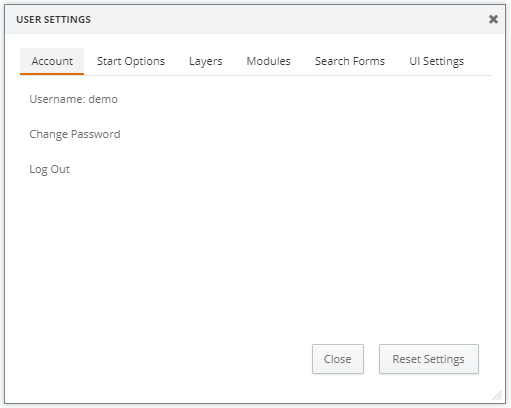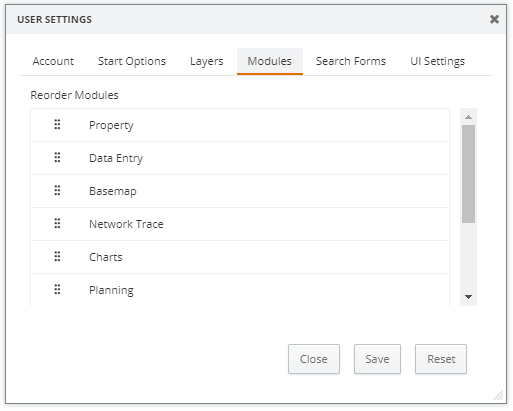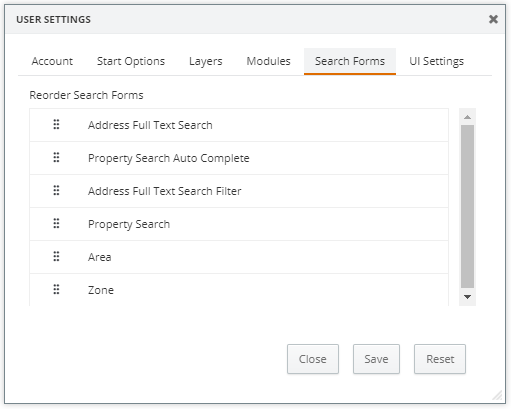User Settings
There are six tabs within the Settings dialog box, each with varying functions that can be customised to reflect the individual requirements of each user.
When settings are customised, IntraMaps will load with these customisations in future use, specific to that particular user.
|
Account |
Under the Account tab, users can:
|
|
|
Customise how IntraMaps will load on start-up.
|
|
Layers |
By default, IntraMaps will load the layers based on the configuration by the administrator. Users can toggle layers on/off, click Save in the Layers tab and the Modules that contain saved layers will be listed here. When loading IntraMaps in the future, these Modules will remember the layer changes that were made. To forget the saved layer changes and revert back to the standard layer configuration, remove the Module from the list. |
|
Modules |
Using drag & drop, users can rearrange the Module list to suit their own individual requirements. Click Save to apply the changes and when loading IntraMaps in the future, the Module list will be updated based on this order. To forget the saved Module list and revert back to the standard Module configuration, click Reset. |
|
Search Forms |
Using drag & drop, users can rearrange the Search Forms for the currently active Module to suit their own individual requirements. Click Save to apply the changes and when loading IntraMaps in the future, the Search Forms for that particular Module will be updated based on this order. To forget the saved Search Forms order and revert back to the standard configuration, click Reset. |
|
UI Settings |
If users are on a touch device, most internet browsers will recognise this and enable Touch Mode functionality by default. Touch Mode is designed to allow for maximum Map Window space for the user on a smaller screen, as most touch devices include smart phones and tablets. Otherwise, if users are on a non-touch device, Touch Mode will be disabled by default. Users can choose to enable/disable Touch Mode regardless of the device they are using. |





